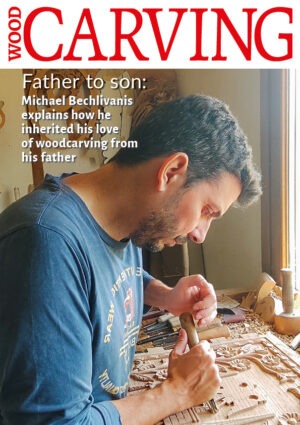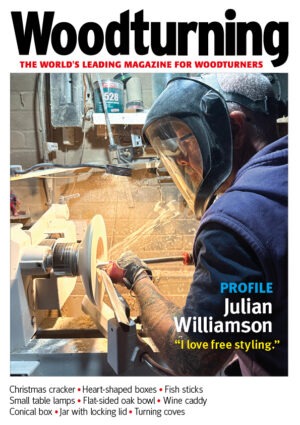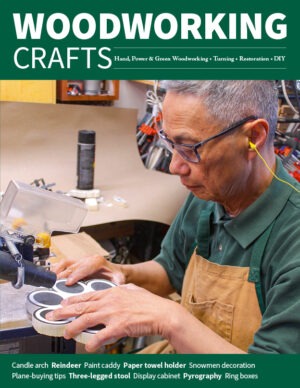
Issue 328 of Furniture & Cabinetmaking is packed with inspiring projects and techniques, from dovetailed bookcases and valet stands to a clever armchair-turned-storage seat. Learn about bridle joints, duplicating turned parts, and making custom dowels, and explore standout designs like Josey Garbutt’s Lines Puzzle Cabinet. With profiles of talented makers and a look at the Wood Awards shortlist, it’s a must-read for furniture enthusiasts.

Issue 210 of Woodcarving is full of festive inspiration and expert guidance, with John Samworth carving a sunset scene and seasonal projects like star ornaments, Christmas cards, and a whimsical genie mirror. Learn how to manage blade wear, simplify lovespoon designs, and meet inspiring carvers from Greece to Ukraine. With book recommendations and community news, it’s a rich and timely issue for every carver.

Issue 416 of Woodturning is full of festive inspiration and creative flair, with Les Symonds exploring small lamp designs and projects ranging from wooden Christmas crackers to heart-shaped boxes and wine caddies. Learn to turn coves without catches, make the most of square blanks, and discover Julian Williamson’s colourful journey in the face of adversity. With gift ideas, book recommendations, and community news, it’s a warm and creative issue for the season.

Issue 97 of Woodworking Crafts brings festive cheer with seasonal projects like carved reindeer, scrollsawn snowmen, and wooden veneer paper chains, plus a curated list of gift-worthy books. You’ll also find practical makes including a paint tote, ring boxes, and a three-legged stool. Learn pyrography contrast techniques, plane restoration tips, and meet inspiring makers like James Otter. A creative and celebratory issue for every woodworker.

The Art of Chairmaking is a step-by-step guide to building elegant Windsor chairs and other classic furniture. It covers tools, techniques, and five projects—including a stool, table, bench, and two armchairs—with clear photos and diagrams for all skill levels.

Seasoned woodcarver Peter Benson introduces the basics of whittling with safety tips, essential tools, and clear, progressive projects. With step-by-step guidance, readers build skills as they carve a dolphin, polar bear, kingfisher, and more.

This book features detailed projects for crafting decorative boxes—from small ring boxes to multi-drawer designs—using techniques like dovetailing, inlay, and veneering with fine woods like walnut and sycamore. With step-by-step photos and personalization tips, readers can create meaningful keepsakes or gifts. Projects include a ring box, wedding box, jewellery box, and heirloom Bible box.

Routing is a complete guide to using router trimmers and tables, featuring 16 accessible projects. Compact and affordable, trimmers handle most routing tasks, from cutting to joining. With clear tutorials and tips, projects include a storage box, photo frame, and chopping board—perfect for all skill levels.

Wood Identification & Use is a comprehensive guide to over 200 wood species, with detailed descriptions, colour photos, and information on properties, uses, and safety. Aimed at small-scale woodworkers, it covers everything from cabinetmaking to carving, with sections on defects, figuring, health risks, and inspiring finished pieces.